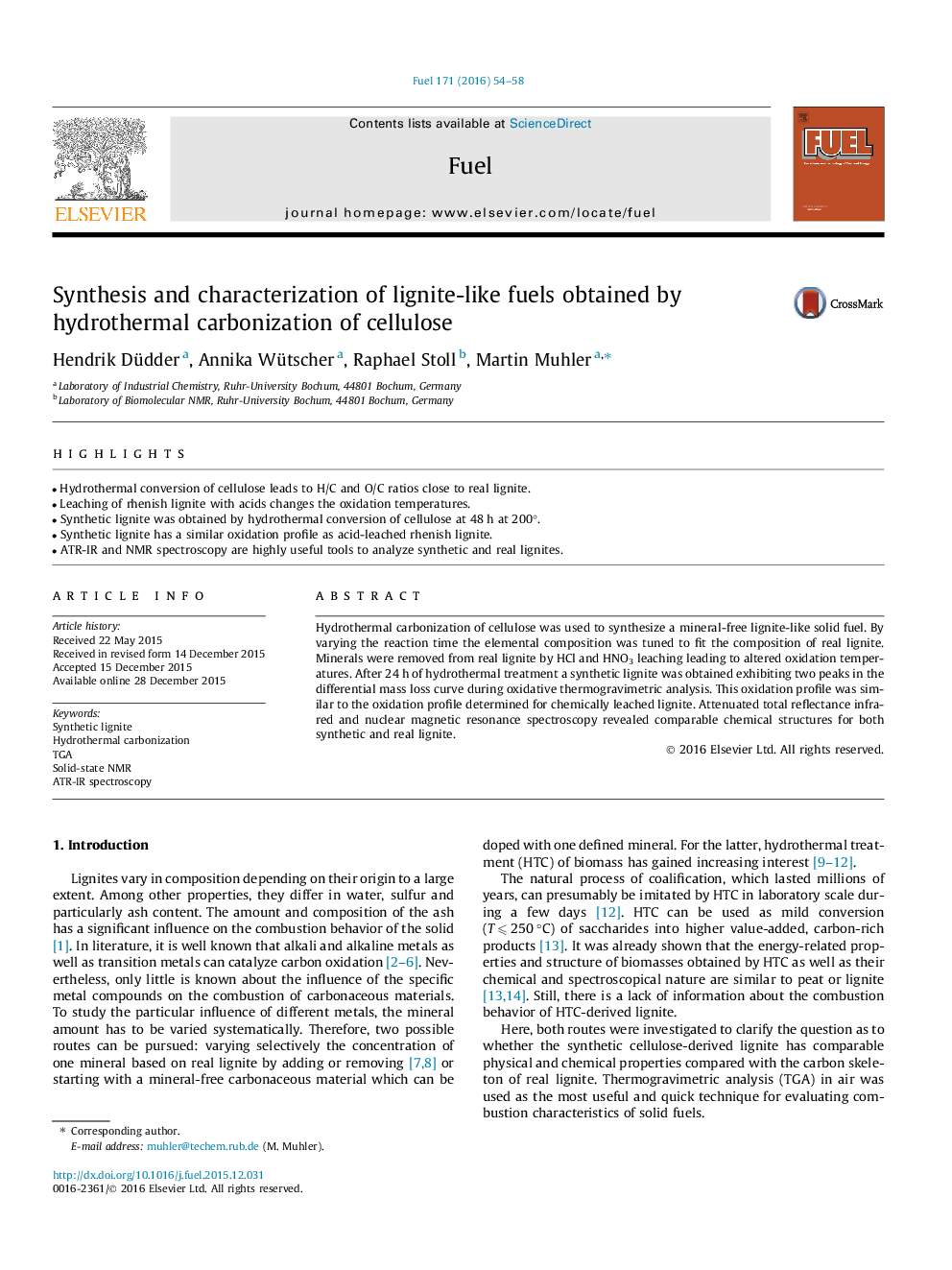| Article ID | Journal | Published Year | Pages | File Type |
|---|---|---|---|---|
| 205255 | Fuel | 2016 | 5 Pages |
•Hydrothermal conversion of cellulose leads to H/C and O/C ratios close to real lignite.•Leaching of rhenish lignite with acids changes the oxidation temperatures.•Synthetic lignite was obtained by hydrothermal conversion of cellulose at 48 h at 200°.•Synthetic lignite has a similar oxidation profile as acid-leached rhenish lignite.•ATR-IR and NMR spectroscopy are highly useful tools to analyze synthetic and real lignites.
Hydrothermal carbonization of cellulose was used to synthesize a mineral-free lignite-like solid fuel. By varying the reaction time the elemental composition was tuned to fit the composition of real lignite. Minerals were removed from real lignite by HCl and HNO3 leaching leading to altered oxidation temperatures. After 24 h of hydrothermal treatment a synthetic lignite was obtained exhibiting two peaks in the differential mass loss curve during oxidative thermogravimetric analysis. This oxidation profile was similar to the oxidation profile determined for chemically leached lignite. Attenuated total reflectance infrared and nuclear magnetic resonance spectroscopy revealed comparable chemical structures for both synthetic and real lignite.
